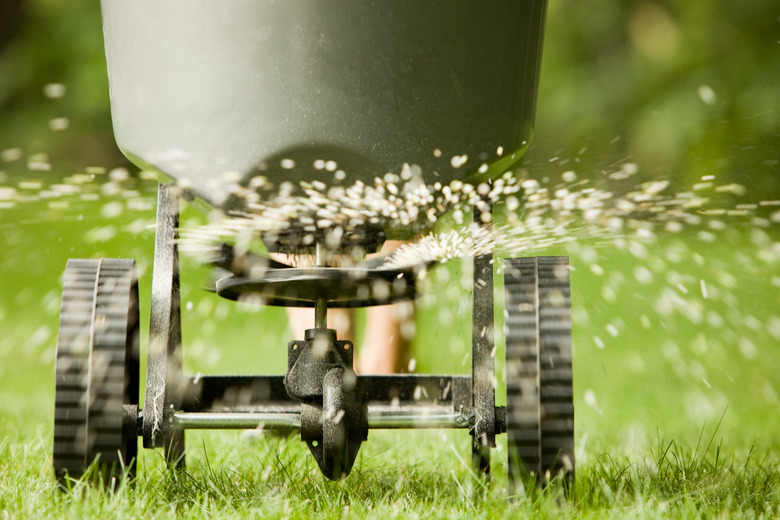List Of Chemical Fertilizers
If your lawn or garden isn't performing up to par, you're probably looking into fertilizers to green up your grass or boost your blooms. A trip to your local garden center is on your agenda, but do you know what to buy once you get there? Budding gardeners are on the lookout for three primary nutrients: Nitrogen, phosphorus and potassium, and all three can be found in chemical fertilizers in different amounts. While soil tests can reveal exactly what your ground is lacking, most home soil will benefit from a nitrogen boost. Chemical fertilizers, also known as synthetic or inorganic blends, are readily available and homeowners use several common types in their residential landscaping.
Organic vs. Chemical Fertilizers
Organic vs. Chemical Fertilizers
While chemical fertilizers are considered inorganic, how do they actually differ from their organic counterpart? The difference is in their sources as well as their quicker-acting uptake to plants. Organic fertilizer comes from living plants or animals and can include manures, compost, feathers or bone meal. Chemical fertilizers, however, may have a natural source, but they go through a manufacturing process to convert them into easy-to-use forms that your plants can use ASAP. Organic fertilizers contain the same nutrients, but in varying forms, and can take some time to use as the soil must break its components down first in order to be taken up by the plants.
Urea
Urea
Urea, also known as carbamide, is one of the most common sources of nitrogen fertilizers used around the world, likely because of its high nitrogen content (46 percent). It's very soluble and can be applied to the surface of the soil (don't forget to water well after applying it – urea impact can be minimized if it stays above ground for days at a time). It is also cheap to transport and isn't prone to caking, which means plants have an easier time using the nutrient itself.
Ammonium Nitrate
Ammonium Nitrate
Ammonium nitrate is another source of nitrogen-rich fertilizer that is inexpensive, works well and is easy to apply. The nitrogen in this fertilizer is usually available immediately for the plant's use. It has around 33 or 34 percent nitrogen, which helps your backyard soil attain the proper nitrogen concentration that keeps your lawn and other plants happy.
Sodium Nitrate
Sodium Nitrate
Sodium nitrate is yet another source of nitrogen for your soil. It originates from northern Chile, where miners find surface deposits of sodium nitrate. This product then goes through a manufacturing process that renders it into a crystalline product. Also known as Chilean nitrate or caliche, it is a very soluble fertilizer that contains nitrogen and sodium.
